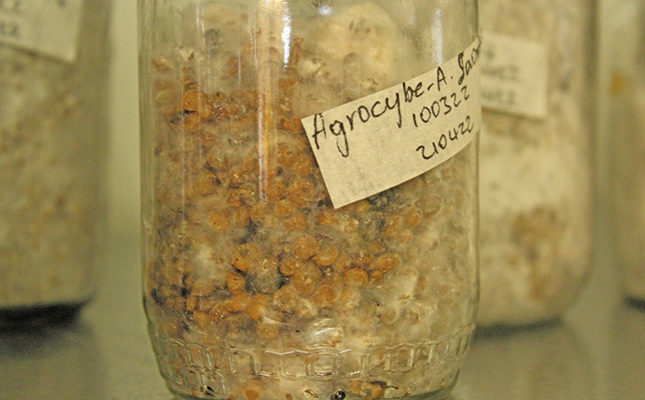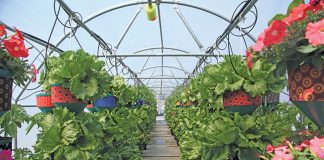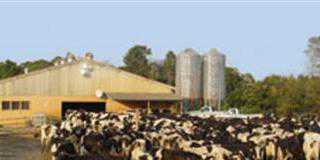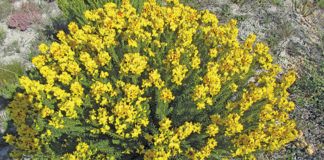
Photo: Lindi Botha
When Sandra and Neil van Rij ventured into mushroom farming in 2008, they went all out, setting up both spawn production and a commercial mushroom farm. Medicinal mushrooms were in particularly high demand at the time, and oyster and shitake mushrooms dominated the operation, neatly named MushRush.
It didn’t take long before the couple, who are based in Howick in KwaZulu-Natal, realised that producing both spawn and mushrooms required a great deal of juggling, especially when trying to keep up with demand.
“It’s like a poultry farmer trying to produce chicks and broilers. The two are both specialised and each requires one’s full attention,” says Van Rij. Spawn and mushroom production each offered its pros and cons, however, and the Van Rijs weighed these up carefully before finally deciding on spawn.
“Spawn producers are few and far between, and the business is capital-intensive, so there’s a greater gap in this market. We also already had all the equipment. And with the longer shelf life of spawn (six weeks as opposed to five days for mushrooms), producing it provides a larger window for sales, reducing waste.
“I also found that producing a consistent batch of quality mushrooms week after week was far more challenging than doing the same with spawn. This is because spawn is cultivated in a highly stable, controlled environment, so the chances of something interfering with growth are minimal.
“In addition, they’re not seasonal and can be produced year-round. Mushrooms are sensitive to seasonal changes, climatic conditions and all the other issues that come with commercial food production,” says Van Rij.
Yet another advantage is that spawn is cultivated in a laboratory, and thus requires far less space for production than is the case with mushrooms. MushRush has three separate laboratories: one where the cultures are produced, another where the spawn is cultivated, and a non-sterile lab housing an autoclave. T
his is a type of pressure cooker used to sterilise sorghum grain, which provides the ‘food’ for the spawn. It achieves this in five hours using extreme pressure and heat.
The Van Rijns also have a packaging room, and a 0,5ha plot where they grow Napier fodder grass as a substrate for mass production of spawn.
Producing spawn
The first stage of spawn production takes place in the most sterile of the three laboratories. Biosecurity is all important at this point, and anyone involved in the process is sprayed down with a steriliser before entry and has to wear a lab coat, hair net and gloves.
The process starts in a petri dish, where mushroom cultures are placed on an agar plate. This is a delicate stage, stresses Van Rij: the culture must be handled with the utmost care to prevent contamination by any other spores or bacteria.
A small section of this culture is then placed on sterilised sorghum grain to produce so-called ‘primary’ spawn. This is allowed to colonise, with the mycelium creating a network of spawn across the grain.
The grain used in this process is obtained from a Durban-based supplier. It is washed to remove the dead grain and then sterilised in the autoclave, as described above.
The next step is to cultivate this spawn in greater quantity, and this takes place in the second laboratory using another piece of specialised equipment, a laminar flow hood.
Equipped with a highly efficient filter, this device generates a stream of almost sterile air and enables a substantial quantity of grain to be safely inoculated with primary spawn. Although great care is taken, the inoculated grain inevitably encounters a small amount of bacteria in this laboratory.
“The process can get very tricky. Many mushroom growers struggle to make the jump from mushroom culture to growing spawn. This step takes place in a laboratory where the environment is controlled, but to a lesser degree than the lab where the cultures are made. It’s like introducing new foods to a baby; you have to do it bit by bit to ensure they don’t reject the food or get ill.”
A week later, a larger bag of grain is inoculated with the primary spawn, and within two weeks of this, the grain is completely covered in mycelium and ready to be sold as mushroom spawn.
Making it easy for customers
After buying the spawn, the customer can add it to a bag of substrate to produce mushrooms. Because the substrate provides the nourishment for the mushrooms, selecting the right material is crucial. Avoiding contamination continues to play a major role, and any substrate should therefore first be sterilised.
As this can create another pitfall for growers, MushRush produces ready-made mushroom ‘logs’, which are clear plastic bags containing spawn and substrate mixed together. The grower need only place the bag in a warm, humid area and water it to get the mushrooms growing. (Traditionally, mushrooms are grown on real tree logs, but production takes a long time.)
The substrate, as mentioned, is Napier fodder grass and is grown on the property.
“It’s cheap, grows fast and produces a lot of substrate on a small piece of land,” says Van Rij. After harvest, the grass is dried, put through a hammer mill and sterilised. Spawn is added to produce the mushroom ‘logs’.
MushRush offers mushroom cultivation classes and pays close attention to substrate production during these lessons, as so many growers struggle with this part of the process. Van Rij explains that having access to a consistent supply of substrate that is freely or cheaply available is key.
“Growing mushrooms in a city isn’t ideal; although you don’t need so much land, accessing and transporting substrate can be a problem.”
Troubleshooting
Knowing your business inside out is often touted as a key to success. In the case of mushroom spawn production, knowing the smell of your business is crucial.
“There are good smells and bad smells,” says Van Rij. “When everything’s going well, there’s a particular smell in the air. If this changes, I know something’s off.”
Mushrooms are highly susceptible to bacteria and other fungi, so having the right types in the right quantities can make or break a crop. If there is contamination from other fungi or bacteria, entire batches of spawn can be ruined.
Van Rij relates how one morning the smell in the laboratories was indeed off.
“I started looking for anything that had changed in the last few days that could have caused contamination. I eventually narrowed it down to a new cleaning agent we were using.
“Because bacteria grow resistant to cleaning chemicals very quickly, we rotate about six different products in each cycle. One we’d never used before was obviously not working and bacteria levels spiked, killing the spawn.”
She notes that even if a shirt sleeve touches the inside of a mushroom bag, foreign bacteria can be introduced. Cleanliness and sterilisation are therefore of the utmost importance.
A growing market
While MushRush can produce up to 250kg of spawn a week, how many mushrooms this translates to is not easy to calculate.
“Customers often ask how many mushrooms they’ll get from a particular quantity of spawn. Answering that is like trying to determine how many apples a tree will give you. The crop depends on the growing conditions, how much water it received, temperatures, and anything else that will influence yields on any other crop,” explains Van Rij.
To grow optimally, mushrooms need fresh air, high humidity and a regular source of light. They also have a high water requirement, as they comprise mostly water. But it is not as easy as it seems and Van Rij says there seem to be many ‘hit-and-miss’ growers.
“It’s not rocket science, but it’s a bit technical. Many start, but then struggle to get production going and give up. It’s mostly at the log stage where they struggle: getting the right substrate, feeding the mushrooms and taking the crop from spawn to mushrooms. This is why we sell prepared logs that already contain everything.”
Despite the challenge, demand for mushroom spawn is growing. Van Rij notes that the market is made up of four groups: foodies wanting to grow their own mushrooms; people interested in the medicinal properties of mushrooms for their own and commercial purposes; people making their own logs and selling them on; and small-scale commercial growers.
The split between home growers and commercial producers is 60/40.
MushRush couriers its products countrywide, with many sales concentrated in Cape Town. Knowledge about mushrooms has also increased in recent years, turning once-sceptical consumers into avid growers.
“There’s certainly a lot more competition in the market than when we started. Back then, people were suspicious and thought we were selling poisonous mushrooms. Now there’s huge demand and interest, especially on the medicinal side.
“Since the airing on Netflix of a documentary on mushrooms, demand for lion’s mane mushrooms in particular has soared, whereas previously there was hardly any interest,” says Van Rij.
Of particular advantage to MushRush is the fact that the production of medicinal mushrooms and food-grade mushrooms is similar, so nothing in the business need be changed to supply both markets.
Email Sandra van Rij at [email protected].













